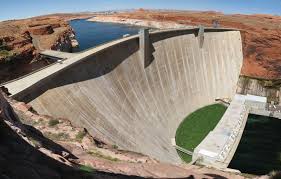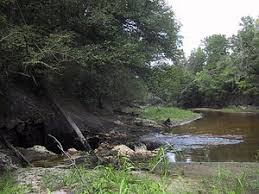The two major sources of water supply on Earth are ground and surface water. Groundwater is a part of the hydrologic cycle that lies beneath the surface but is tied to surface supplies.
Groundwater is the largest potential source of freshwater in the hydrologic cycle, larger than all surface lakes and streams combined (Christopherson, 2007).
Despite this volume and its obvious importance, groundwater is widely abused. This article will define and analyze the formation of groundwater resources. It will also discuss the problems of groundwater management.
Definition of Groundwater
Groundwater is the part of the sub-surface water that fully saturates the pore spaces in bedrock, regolith, or soil, and so occupies the saturated zone (Strahler and Strahler, 2006).
Arms (1994) simply defined groundwater, as water below Earth’s surface. Of all the water that falls on land as rain or snow, about one third runs off the surface into streams and rivers, and another one third evaporates or is absorbed by plants. The rest drips or percolates down through soil and rocks and becomes part of the groundwater resources.
Formation of Groundwater Resources
Groundwater is fed by surplus water, which percolates downward from the zone of capillary water as gravitational water.
This excess surface water moves through the zone of aeration, where soil and rocks are less than saturated (an unsaturated zone) and some pore spaces contain air.
Eventually, water reaches an area of collected subsurface water known as the zone of saturation, where the pores contain only water. Like a sponge made of sand, gravel, and rock, this zone stores water within its structure, filling all available pores and voids.
The porosity of this layer is dependent on the arrangement, size, and shape of individual component particles; the cement between them; and their degree of composition. Subsurface structures are referred to as permeable or impermeable, depending on whether they permit or obstruct water flows.
An acquifer is a rock layer that is permeable to groundwater flow in usable amounts. An aquiclude is a body of rock that does not conduct water in usable amounts. The zone of saturation is an unconfined aquifer, a water-bearing layer that is not confined by an overlying impermeable layer.
The upper limit of the water that collects in the zone of saturation is the water table; it is the contact surface between the zones of saturation and aeration.
The slope of the water table, which generally follows the contours of the land surface, controls groundwater movement. Water wells must penetrate the water table to optimize their potential flow.
Where the water table intersects the surface, it creates springs or feeds lakes or riverbeds. Ultimately, groundwater may enter stream channels and flow as surface water. During dry periods the water table can act to sustain river flows.
Read Also : Proper Methods of Disposal of Dilute Pesticide Waste
Problems of Groundwater Management
The problems of groundwater management shall be examined from two perspectives – water table depletion and pollution.
The rapid withdrawal of ground water has seriously impacted the environment in many places. Increased urban populations and industrial developments require larger water supplies –needs that cannot always be met by constructing new surface water reservoirs.
To fill these needs, vast number of wells using powerful pumps draws huge volumes of ground water to the surface, greatly altering nature’s balance of groundwater discharge and recharge.

As water is pumped from a well, the level of water in the well drops, at the same time, the surrounding water is lowered in the shape of a downward-pointing cone, termed the cone of depression.
The difference in height between the cone tip and the original water table is the drawdown. The cone of depression may extend out as far as 16km or more from a well where heavy pumping is continued.
Where many wells are in operation, their intersecting cones will produce a general lowering of the water table. The depletion of the water table often greatly exceeds recharge-the rate at which infiltrating water moves downwards to the saturated zone.
Another byproduct of water table depletion is subsidence – a sinking of the land in response to the removal of water from underlying sediments. This problem has plagued a number of major cities that rely heavily on groundwater wells for their water supplies.
Read Also : Problems of Water Resources Development
An interesting side effect of urban sprawl and paving land for parking lots, mall, office and industrial parks, and sub-divisions is that the process seals the land, rendering it impermeable to water. Paving and sealing urban surfaces deprives the groundwater system of adequate recharge water, thereby further reducing water table.
Another major environmental problem related to ground water withdrawal is contamination of wells by pollutants that infiltrate the ground and reach the water table. Both solid and liquid waste is responsible.
When surface water is polluted, groundwater also becomes contaminated because it is recharged from surface – water supplies. Groundwater migrates slowly compared to surface water. Surface water flows rapidly and flushes pollution downstream, but sluggish groundwater, once contaminated, remains polluted virtually forever (Christopherson, 2007)
Pollution can enter groundwater from industrial waste injection wells, septic tank outflows, seepages from hazardous waste disposal sites, industrial toxic-waste dumps, residues of agricultural pesticides, herbicides, fertilizers, and residential and urban wastes landfills.
Another source of contamination in coastal wells is saltwater intrusion. Since fresh water is less dense than salt water, coastal aquifer can be underlain by a layer of salt water from the ocean. When the aquifer is depleted, the level of saltwater rises and eventually reaches the well from below, rendering the well unusable.
In summary, Groundwater is a rich source of fresh water supply for domestic, agricultural and industrial uses. However, there are some militating problems in its management, which include pollution and depletion of the water table. If the problem of overuse and pollution are controlled, groundwater will continue to be a reliable source of fresh water supply.
Groundwater can be defined as water below the earth surface. Groundwater is the largest potential source of freshwater in the hydrological cycle.
Groundwater is fed by surplus water, which percolates downward from the zone of capillary water as gravitational water. Water table depletion and contamination are some of the major challenges affecting the use of groundwater resources.

